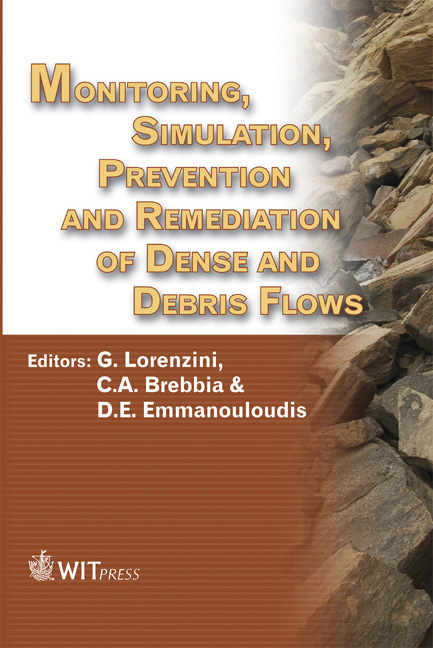Analysis And Modeling Of Debris Flows In Gargano Watersheds (Puglia Region, Southern Italy)
Price
Free (open access)
Transaction
Volume
90
Pages
11
Published
2006
Size
2970 kb
Paper DOI
10.2495/DEB060181
Copyright
WIT Press
Author(s)
F. Gentile, T. Bisantino, S. Puglisi & G. Trisorio Liuzzi
Abstract
In the past, the alluvial fan of Pulsano torrent, located on the southern hillslope of the promontory of Gargano, was exposed to intense debris flows. In this paper, a methodology of debris flows modeling is applied to the watershed to delineate the hydrogeological risk situations in valley areas. For this purpose, hazard potential and vulnerability conditions of the concerned areas are investigated in order to plan and guide measures aimed at limiting the damages such hazards may cause. Keywords: debris flow, risk assessment, control measures. 1 Introduction The southern hillslope of the Gargano promontory (Puglia Region, Southern Italy) is crossed by several torrents shaped in calcareous formations prone to mechanical erosion caused by heavy rainfall. In the last century some exceptional events have affected the area between the Monte Sant’Angelo and Manfredonia towns Curci et al. [1]. The debris flow that occurred on 15 July 1972 was the most catastrophic event. It caused fatalities in the town of Manfredonia. Cars were swept away by the flow and deposited along the streets that turned into conveyance channels, and the surrounding agricultural areas were flooded. In view of that, hydraulic management works (check dams, gabions or concrete banks, sills) were built in some watersheds. This paper describes a methodology to analyse debris flow risk in this area, starting from the estimation of potential debris volumes. This is followed by the debris flow modeling targeted at producing hazard mapping and the land
Keywords
debris flow, risk assessment, control measures.





